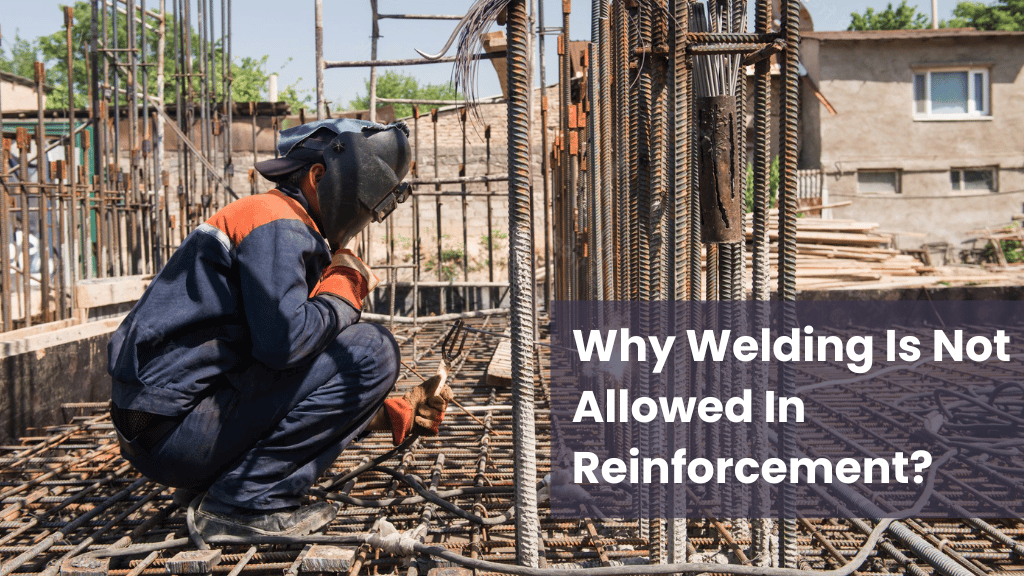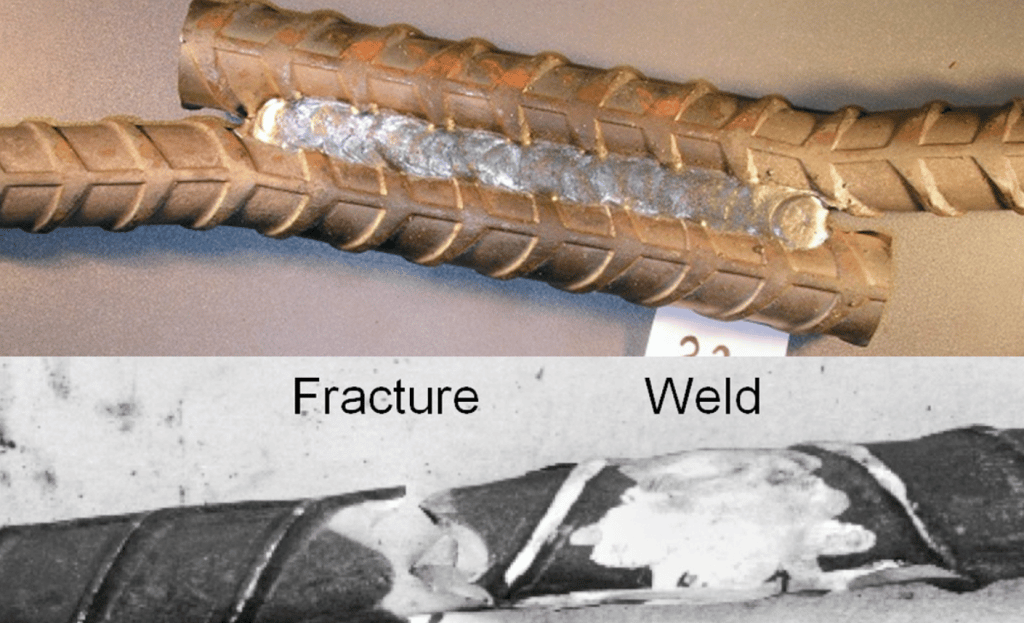The welding process can cause deficiencies in reinforcement bars, metallurgical transformations, microstructure changes and re-crystallization of particles.
Due to a reduction in strength and ductility due to a decrease in welding heat input, welding metal toughness is extremely sensitive.
In many applications, welding of reinforcement bars is a practical means to provide the force transfer needed within the connection, but the following guidelines should be followed in order to prevent damage to the reinforcement and to ensure that the force transfer achieved is appropriate:
- There should be no more than 0.5 percent carbon content in the bars.
- Make sure that you use only electrodes that have a low hydrogen content, such as AWS class E7015 or E7016.
- Cold bends should not be welded within eight inches of a weld.
- Welds must be deposited on surfaces that have been pre-heated at or above the preheat temperature. A distance of three inches from the welding point should be preheated in all directions.
- If indicated by the design, tack welding should not be permitted in these connections.

200 Cases
Considered
190 Hours of Research
22 Experts Interviewed
100 Studies
Analyzed
Design of Welding for Reinforcement:
It is estimated that the ultimate strength of reinforcement welds will be determined by the following formula:

Where = 0.70 represents the welding tensile capacity = the welding length = the welding thickness. The following figure illustrates typical welding details of reinforcement bars:

Frequently Asked Questions

Is Rebar Weldable?
Rebar that has been designated as weld-able can be welded without issue. If you intend to weld the rebar in your project, you should look for rebar that has a “W” grade, which is present in practically all cases.
What Occurs If The Incorrect Rebar Is Welded Into Concrete?
Rebar shouldn’t be welded, therefore if you weld it and then embed it in concrete, the concrete won’t have the proper tensile strength and will crack or break under weight and stress.
Can The A615 Rebar Be Welded?
High-strength alloy rebar, or A615 rebar, should never be welded because it is more likely to crack at welded joints. If welding A615 rebar is necessary, it will need to be well preheated before welding.
Are There Several Joint Welds On The Market?
When it comes to welding rebar, you have a variety of options, but the three that are most frequently utilised are lap joints, butt joints, and splice joints. The type of joint to be utilised and its location will often be specified in the engineering drawings.
What Approach Is The Best To Weld A Lot Of Rebar Pieces ?
A jig is a terrific option if you need to weld a lot of rebar, especially if you’re producing pre-made parts that need to fit together. When holding the rebar while it is being welded, a jig can minimise deformation.
Will It Be Okay If I Weld Rebar Together And It Becomes Excessively Bent?
For the rebar, the engineer will be working within predetermined tolerances. It might need to be cut and rejoined in the proper place if after welding it moves outside of these tolerances. To strengthen the new joint in some circumstances, more rebar may need to be added.
Conclusion
According to research findings based on experimental evidence, joints that were welded and cooled in water had the highest possibility of resisting fatigue.
While the joints that had been welded had a 3 mm welding reinforcement and had been cooled in calm air, they had the worst chance of surviving to fatigue.
Of general, the welding reinforcement has a significant impact on the fatigue strength in butt welded connections.